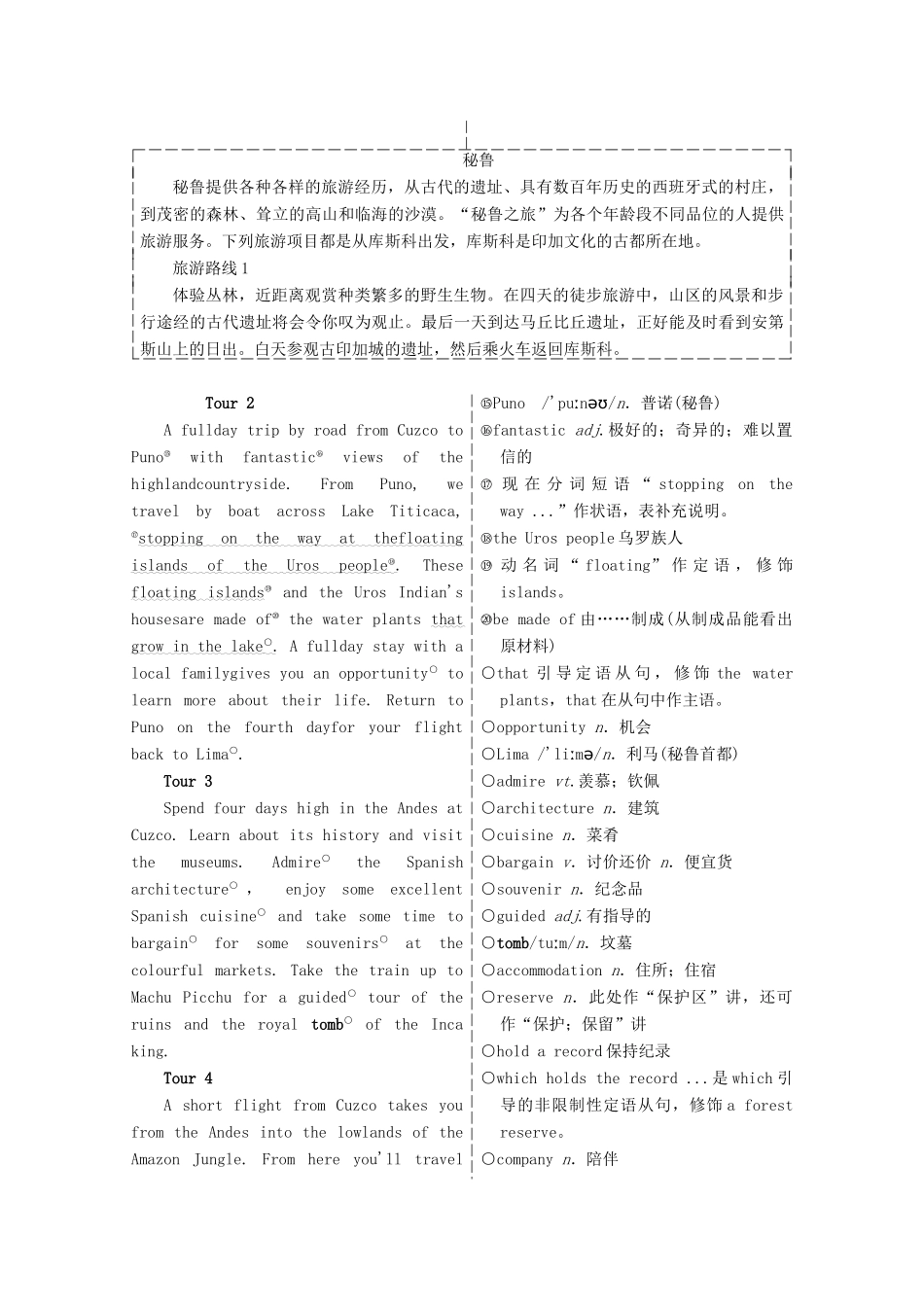Unit 5 Travelling abroadSection Ⅳ Learning about Language &;Using Language[原文呈现][读文清障]PeruPeru is a country on the Pacific coast of① South America. It has three main geographical areas: a narrow coastal belt; the Andes Mountains② running parallel③ to the coast; and high, flat plains in the southeast. In the high plains area is Lake Titicaca④ , the highest lake in the world, on which boats can travel⑤. Peru has abundant⑥ plants from desert grasses to vast areas of jungle.Once the centre of the powerful and extremely wealthy Inca Empire⑦, much of South America was governed⑧ by Spain from the sixteenth century onwards⑨. Peru finally gained its independence⑩ from Spain in 1821. The capital of Peru is Lima, which is in the north on the coast ⑪ . The ancient Inca capital, Cuzco, is found high in the Andes. It is a popular tourist destination⑫as it is close to the famous Inca ruins⑬ of the city of Machu Picchu⑭. Cuzco is a lively city with many hotels and inns⑮ , where both Indian and Spanish culture and art can be seen ⑯ . 1 . Why is Cuzco popular with tourists?2 . What is special about Lake Titicaca?①on the coast of 在……的海岸线上②the Andes /'ændi z/ Mountainsː安第斯山脉③parallel/'pær lel/əadj. 平 行 的 ; 相 同的;类似的④Lake Titicaca / tItI'kɑ kɑ / ˌːː的的喀喀湖⑤In the high plains area is Lake Titicaca 是 倒 装 句 。 还 原 后 是 Lake Titicaca is in the high plains area。 the highest lake in the world是 Lake Titicaca 的同位语,on which引导非限制性定语从句。⑥abundant/ 'b nd nt/əʌəadj.丰富的;充裕的⑦Inca /'I k / Empireŋ ə印加帝国⑧govern/'ɡ vn/ʌvt. &vi.统治;支配;管理⑨onwards /' nw dz/ɒəadv.向前地;前进地⑩gain one's independence 获得独立⑪which ...


